Volume 3, Issue 3
Displaying 1-3 of 3 articles from this issue
- |<
- <
- 1
- >
- >|
Preface
-
2008 Volume 3 Issue 3 Pages 60
Published: 2008
Released on J-STAGE: November 04, 2008
Download PDF (17K)
Article
-
2008 Volume 3 Issue 3 Pages 61-75
Published: 2008
Released on J-STAGE: November 04, 2008
Download PDF (161K)
Case Study
-
2008 Volume 3 Issue 3 Pages 76-83
Published: 2008
Released on J-STAGE: November 04, 2008
Download PDF (168K)
- |<
- <
- 1
- >
- >|
